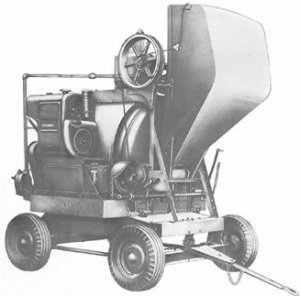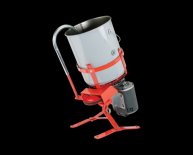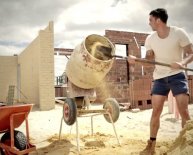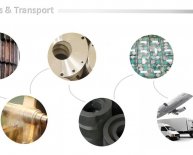
Cement Mixer capacity

LEARNING OBJECTIVE:
Upon completing this section, you should be able to determine methods and mixing times of concrete.
Concrete is mixed either by hand or machine. No matter which method is used, you must follow well-established procedures if you expect finished concrete of good quality. An oversight in proper concrete mixing, whether through lack of competence or inattention to detail, cannot be corrected later.
MIXING BY HAND
A batch to be hand mixed by a couple of crewmembers should not be much larger than 1 cubic yard. The equipment required consists of a watertight metal or wooden platform, two shovels, a metal-lined measuring box, and a graduated bucket for measuring the water.
The mixing platform does not need to be made of expensive materials. It can be an abandoned concrete slab or concrete parking lot that can be cleaned after use. A wooden platform having tight joints to prevent the loss of paste may be used. Whichever surface is used, you should ensure that it is cleaned prior to use and level.
Lets say your batch consists of two bags of cement, 5.5 cubic feet of sand, and 6.4 cubic feet of coarse aggregate. Mix the sand and cement together first, using the following procedure:
- Dump 3 cubic feet of sand on the platform first, spread it out in a layer, and dump a bag of cement over it.
- Spread out the cement and dump the rest of the sand (2.5 cubic feet) over it.
- Dump the second sack of cement on top of the lot.
This use of alternate layers of sand and cement reduces the amount of shoveling required for complete mixing.
Personnel doing the mixing should face each other from opposite sides of the pile and work from the outside to the center. They should turn the mixture as many times as is necessary to produce a uniform color throughout. When the cement and sand are completely mixed, the pile should be leveled off and the coarse material added and mixed by the same turning method.
The pile should next be troughed in the center. The mixing water, after being carefully measured, should be poured into the trough. The dry materials should then be turned into the water, with great care taken to ensure that none of the water escapes. When all the water has been absorbed, the mixing should continue until the mix is of a uniform consistency. Four complete turnings are usually required.
MIXING BY MACHINE
The size of a concrete mixer is designated by its rated capacity. As we mentioned earlier, the capacity is expressed in terms of the volume of mixed concrete, not of dry ingredients the machine can mix in a single batch. Rated capacities run from as small as 2 cubic feet to as large as 7 cubic yards (189 cubic feet).

















